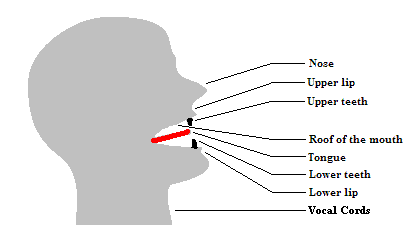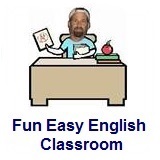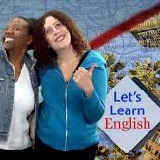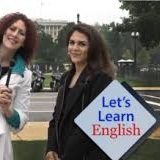| a |
abbey,
after,
an,
animal, bag,
bath, battle,
bland, fast,
glass, hat,
jab, jam,
lamb, man,
pan, ran,
stand, tap,
valley |
|
|
|
Note: the red
letters all have the same sound |
|
|
|
This is a VOICED sound which means Your Vocal Cords DO
vibrate when making this sound. |
 You CAN
LISTEN to your Vocal Cords vibrating if you cover
your ears with your hands. You CAN
LISTEN to your Vocal Cords vibrating if you cover
your ears with your hands.
Try covering your ears with your hands as Akiko is doing in
the picture.
Now make the sound of this lesson. Can you listen to your vocal cords vibrating?
VERY GOOD |
 You CAN
FEEL your Vocal Cords vibrating if
you place your hands on your neck. You CAN
FEEL your Vocal Cords vibrating if
you place your hands on your neck.
Try placing your hands on your neck as Akiko is doing in the
picture.
Now make the sound of this lesson. Can you feel your vocal
cords vibrating?
VERY GOOD |
|
The following diagram shows the most important parts of your
head and mouth used for pronouncing the sounds of English.
It also shows the location of your Vocal Cords. |
 |
|
|
Mouth, lips,
and tongue
The following descriptions explain the proper mouth, lips,
and tongue position when you make this sound. |
Your
mouth should be relaxed. |
Your lips should be unrounded. |
The front part of your tongue should be in the lower part of your
mouth. |
|
|
Additional Lessons |
 About These
Lessons About These
Lessons
The following classroom lessons are great for students
who want additional conversation, listening, and reading
practice. |
-
Conversation Lesson -
Intermediate Level. Let's
Learn English conversation lesson
with a conversation video, a video script, audio
listening practice, and a new
words section.
|
 Conversation Lesson
19 - Movie Night Conversation Lesson
19 - Movie Night
(Intermediate -
Conversation, Listening, Reading)
In this lesson Anna loves movies! And Pete has invited
her to see one with him. But is that a good idea? |
Lesson Video
Watch the video and then read the video script. |
Video Script
Anna: Hi, can you tell me how to get to your movie theater?
(Movie theater worker on the phone gives directions.)
Anna: Oh, that’s easy. OK, thank you. Bye.
(Anna meets Pete outside of the theater.)
Anna: Hi, Pete! Thanks for the movie invitation.
Pete: Yeah, sure Anna.
Anna: I love movies. I love the plot! I love the set design! I love the
costumes! I love -
Pete: Anna, I take movies very seriously. You're not one of those people who
talks during a movie, are you?
Anna: No.
Pete: Good.
Professor Bot: Anna loves movies. And..she loves talking about movies. And Pete
doesn’t sound happy about that.
But he’s trying to be polite. He can do that with Indirect Questions.
We can ask a question directly: Where is your movie theater? or indirectly as
Anna does:
Anna: Can you tell me how to get to your movie theater?
They have the same meaning. But indirect questions are more polite and a little
more formal.
Many indirect questions begin with:
Can/Could you tell me…
Would/Do you mind…
Would it be possible…
or
Do you know…
Hmm, do you know if Anna will stop talking? I sure don’t.
Keep watching. And, this time look for indirect questions that begin with: Would
you mind…
Anna: I love the smell of popcorn. I love seats that rock.
(Her chair makes noise as she rocks back and forth.)
Pete: I love when people are quiet.
(The lights go down and we see movie light on their faces.)
Anna: Ooh look, the previews are starting. I love to see what movies are coming
out. Oh, this one looks good!
Pete: Anna, the previews are part of the movie experience. So, would you mind
not talking?
Anna: Oh, sure, sure.
(Anna eats her popcorn loudly. Then, she begins drinking her milkshake loudly.)
Pete: Anna, I was wondering: are you almost finished with that?
Anna: No. There's still a lot of milkshake at the bottom.
(She drinks loudly again. And again.)
Pete: Anna, do you mind not drinking so loudly?
Anna: I'll try. But it's really thick.
(She moves the straw around and makes even more noise.)
Pete: Anna, what are you doing?!
(A person in the audience shushes Pete.)
Person in audience: Shh!
(Pete tells the person what was happening.)
Pete: I’m not the one making all the noise.
Person in audience: Shhh!
Anna: I’m done now.
(Anna now holds many noisy boxes of candy. Finally, she chooses a candy bar.)
Pete: Anna, would you mind opening that a little bit more quietly?
Anna: I'll try.
(She tries to open it quietly but cannot.)
Pete: Anna, just give it to me!
(He tears it open with his mouth. It makes a loud noise. Again, someone in the
audience thinks he is making too much noise.)
Person in audience: Shhh!
Pete: (to the person) It's not mine. I'm opening it for her. Here.
Person in audience: Shhhhhh!!
(He gives the candy bar quickly back to her.)
Pete: Here!
Anna: Thanks, Pete.
Pete: Now, would you mind being more quiet?
(The light of someone’s phone shines in Pete’s face. He asks the person a
question.)
Pete: Excuse me, would you mind turning down your phone light?
(Then, Anna’s phone rings.)
Anna: Oh, sorry! I forgot to turn my phone off.
(She tries to turn it off but drops it under the seat.)
Anna: Oh no! I dropped it. Where is it?
(She looks under the seat in front of her.)
Pete: Anna, can you please turn off your phone?
(She speaks to the person Pete just asked to turn their phone light down.)
Anna: Excuse me, would you mind lending me your phone light for a minute?
Pete: No! I’ll get it!
Person in audience: Shhhhh!
(People shush Pete again. He finally has had enough.)
Pete: Look, people, I’m not the noisy one here! So, you all need to shush the
right person. And I should know about shushing! I shush people all the time!!
Security guard: Excuse me, sir. You can’t yell in a movie theater. Would you
mind coming with me?
Pete: You're kicking me out? Me? But I’m always the quiet one in the movie!
(The security guard takes Pete out. Anna watches the movie and eats quietly from
her bag of popcorn.)
Anna: Pete should know better. You have to be quiet in a movie theater. Shh, the
movie’s starting!
Professor Bot: Well, that’s a surprise! I thought Anna would be the noisy one.
Well, she was … with her food. But Pete did all of the talking. At least he
tried to be polite by using indirect questions. |
Listening
Now practice listening to only the audio portion of the conversation. |
|
Practice |
Now, you try it!
When you are in a new city or place, you may have many questions. For example,
maybe you are visiting a museum, restaurant or some other place. You don't know
how to find it. So, you ask someone a question. Then, when you arrive at the
place, you have more questions.
Read about indirect questions below. Then, use the Comments section to practice
making indirect questions!
Indirect Questions
Direct questions are questions that we can ask
family, friends, or other people with whom we are close.
Ex: “Where is the movie theater?”
Indirect questions are polite and a little more
formal. We use them when we talk to strangers or people we are not close with
and in work situations.
Ex: “Could you tell me where the movie theater is?”
Common indirect phrases:
Can/Could you tell me…
Would you mind…
Would it be possible
Is there any chance….
Do you know…
Do you have any idea...
Word Order
When we make indirect questions, the word order changes. Look carefully at the
sentences below.
Direct: Why didn’t Penelope come?
Indirect: Can/could you tell me why Penelope didn’t come?
WRONG: Can/could you tell me why didn’t Penelope come?
Direct: Where is my phone?
Indirect: Do you know where my phone is?
WRONG: Do you know where is my phone?
Direct: Where is he?
Indirect: Would you mind telling me where he is?
WRONG: Would you mind telling me where is he?
Using do/does/did
For direct questions with do, does or did, this word is removed from the noun
clause in the indirect question. (The noun clause in the first example below is
"what time the meeting starts.")
Direct: What time does the meeting start?
Indirect: Do you have any idea what time the meeting starts?
WRONG: Do you have any idea what time does the meeting start?
Direct: Where do you want to sit?
Indirect: Can you tell me where you want to sit?
WRONG: Can you tell me where do you want to sit?
Using can/could
With some direct questions that begin with can or could, this word is removed
from the indirect question.
Direct: Can/could I come to the movie?
Indirect: Would it be possible for me to come to the movie?
WRONG: Would it be possible can I come to the movie?
Direct: Can/could you share your popcorn?
Indirect: Would you mind sharing your popcorn?
WRONG: Would you mind can you share your popcorn?
“Yes or No” Questions
A “yes or no” question is a question whose expected answer is “yes” or “no.”
For "yes or no" direct questions without what, where, why, who, when and how, we
use if or whether in the indirect question.
Direct: Does Anna take movies seriously?
Indirect: Do you know if Anna takes movies seriously?
Indirect: Do you know whether Anna takes movies seriously?
WRONG: Do you know does Anna take movies seriously?
Direct: Is this the right theater?
Indirect: Can you tell me if this is the right theater?
Indirect: Can you tell me whether this is the right theater?
WRONG: Can you tell me is this the right theater?
Direct: Has the movie ended?
Indirect: Do you have any idea if the movie has ended?
Indirect: Do you have any idea whether the movie has ended?
WRONG: Do you have any idea has the movie ended? |
|
New Words |
- candy bar –
n. a long, thin, sweet food, usually covered in
chocolate
- direct –
adj. connected or related to something in a
clear way
- formal –
adj. suitable for serious or official speech
and writing
- indirect –
adj. not direct
- invitation –
n. a written or spoken request for someone to
go somewhere or to do something
- kick out –
v. to force someone to leave a place
- lend –
v. to give something to someone to be used for
a period of time and then returned
- milkshake –
n. a thick drink made of milk, a flavoring
syrup, and often ice cream
- plot –
n. a series of events that form the story in a
novel, movie, or live theater performance
- polite –
adj. having or showing good manners or respect
for other people
- popcorn –
n. corn in the form of hard yellow seeds that
burst open and become soft and white when they are heated
- preview –
n. a selected group of scenes that are shown to
advertise a movie or television show
- rock –
v. to move someone or something back and forth
or from side to side
- seat –
n. something, such as chair, that you sit on
- set design –
n. the creation of film, television or
theatrical scenery
- shush –
v. to tell someone to be quiet using the
interjection “shh”
- straw –
n. a thin tube used for sucking up a drink
- take (something) seriously
– expression. to treat someone or something as
being very important and deserving attention or respect
- thick –
adj. not flowing easily
- turn down –
v. to lower the volume, temperature or channel
of something by pressing a button or moving a switch
- turn off –
v. to stop the operation or flow of (something)
by pressing a button, moving a switch, etc.
|
 Conversation
Lessons Conversation
Lessons
Study all 30 English intermediate conversation lessons.
Let's Learn English conversation lessons each with a
conversation video, a video script, audio listening
practice, and a new
words section.
These lessons are for
intermediate students. |
 Conversation
Lessons Conversation
Lessons
Study all 52 English beginner conversation lessons. Let's Learn
English conversation lessons each with a conversation
video, a video script, audio listening practice, video
speaking practice, video pronunciation practice, a new
words section, and a writing activity.
These
lessons are for beginning students. |
|
Source:
Voice of America |
|